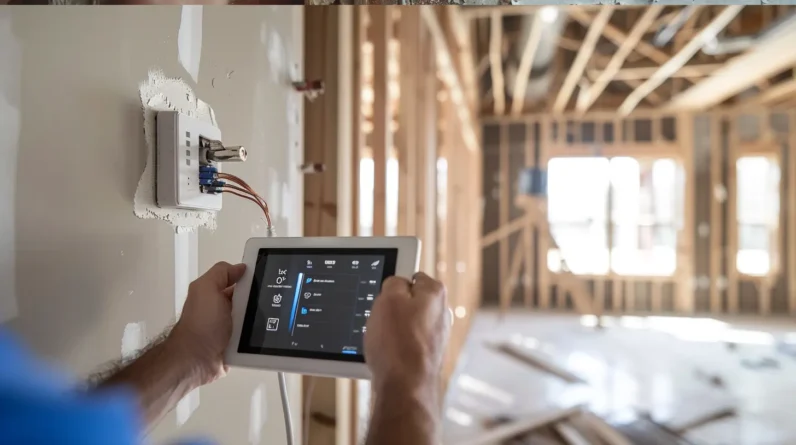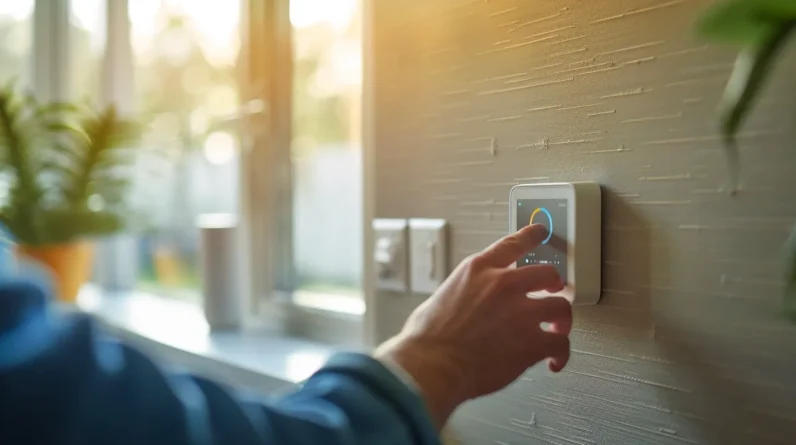
True smart home efficiency emerges when we’ve automated ourselves out of constant device management. We’re measuring success by how rarely we open control apps—predictive systems should learn our patterns and execute routines autonomously through state-based triggers rather than manual commands. The goal isn’t accumulating connected devices; it’s building adaptive learning systems that respond to environmental conditions and behavioral data without our intervention. When cognitive load decreases and screens stay dark, we’ve achieved genuine automation where intelligent orchestration handles what clock-based schedules and app notifications never could.
The Paradox of Constant Connectivity in Modern Homes
While smart home devices promise reduced energy consumption, they create an inherent inefficiency: they must remain perpetually powered to maintain network connectivity and respond to commands. We’re facing a fundamental trade-off in home automation architecture. Each connected device—whether it’s monitoring occupancy, adjusting thermostats, or controlling lighting—draws baseline power for wireless radios, processors, and sensors. This “vampire load” accumulates across networks of dozens of smart homes components. The efficiency gains we achieve through automated climate control or optimized lighting schedules often offset partially by the constant power draw of the control infrastructure itself. Understanding this paradox is essential for designing truly efficient systems. We need to evaluate total energy expenditure, not just the savings advertised by individual home devices.
How Predictive Automation Reduces Daily Decision Fatigue
Beyond the infrastructure power requirements, smart home systems deliver cognitive benefits that quantify differently than energy metrics. We’re addressing decision fatigue through predictive automation that learns behavioral patterns and executes routine tasks autonomously. When your system anticipates temperature preferences, lighting schedules, and security protocols without manual input, you’ve eliminated dozens of daily micro-decisions.
The efficiency gain isn’t just temporal—it’s neurological. Each automated decision making pathway preserves mental bandwidth for complex problem-solving. Effective personalization requires multi-sensor data fusion: occupancy detection, historical preference mapping, and contextual awareness algorithms. We’re not simply programming schedules; we’re deploying adaptive systems that refine themselves through continuous learning loops.
The measure of true automation success? You’ll stop reaching for interfaces entirely. That’s when predictive systems have achieved ideal cognitive offloading.
Learning Systems That Adapt to Your Lifestyle Without Manual Input
When machine learning algorithms process sufficient behavioral data, they construct personalized automation models that eliminate configuration overhead entirely. Your system recognizes patterns across occupancy, environmental preferences, and device integration workflows, then autonomously optimizes operations. We’re talking about adaptive intelligence that refines itself continuously, not static rules requiring constant revision.
These systems deliver practical efficiency through:
- Contextual pattern recognition that correlates time, location, and environmental conditions to predict needs
- Cross-device orchestration that synchronizes lighting, climate, and security without explicit programming
- Behavioral forecasting that anticipates routine variations and adjusts proactively
Voice control becomes supplementary rather than primary—your environment responds before you ask. The architecture learns exceptions, seasonal shifts, and preference drift, maintaining relevance without manual recalibration. True automation means intervention becomes unnecessary.
The Hidden Cost of App-Dependent Smart Home Management
Adaptive systems promise hands-free operation, yet most smart home ecosystems still chain users to manufacturer apps for critical functions. This dependency creates app overload—we’re managing separate interfaces for lighting, climate, security, and entertainment rather than orchestrating unified automation. Each vendor demands their proprietary control layer, fragmenting what should be seamless integration.
The real cost isn’t just convenience. Device clutter compounds when we can’t establish cross-platform routines without third-party bridges or complex API configurations. We spend time context-switching between apps instead of defining system-level behaviors once. True efficiency requires interoperability standards that let devices communicate directly, eliminating the app intermediary layer. When automation genuinely adapts, we shouldn’t need screens to maintain it.
Building Routines That Run Themselves: The Path to True Automation
Automation achieves its full potential once we shift from scheduled tasks to context-aware triggers that respond to system state rather than clock events. Smart Routines built on conditional logic eliminate manual intervention entirely. When motion sensors detect no activity for 30 minutes while doors lock, lights extinguish automatically—no app required.
Consider these integration patterns for Automated Habits:
- State-based triggers: Light levels, temperature thresholds, and occupancy detection drive actions
- Chained sequences: One device’s state change cascades through dependent systems
- Fallback conditions: Secondary triggers guarantee execution when primary sensors fail
We’re engineering systems that observe, interpret, and respond. The sophistication lies in mapping device relationships and defining precise trigger conditions. This transforms reactive smart homes into genuinely autonomous environments.
Conclusion
We’ve designed our homes to be smart, but let’s not miss the forest for the trees—true intelligence means systems that operate autonomously, not interfaces demanding constant attention. The path forward requires robust sensor networks, contextual learning algorithms, and seamless protocol integration across platforms. When our automation frameworks achieve genuine predictive capability, they’ll fade into the background entirely. That’s the benchmark: technology that serves without requiring us to serve it first.







